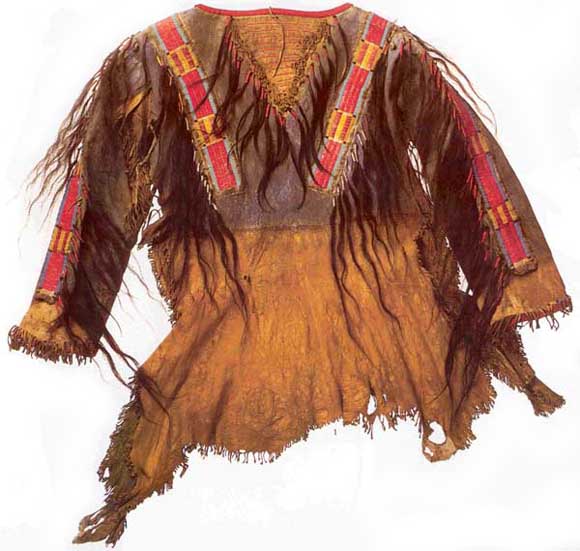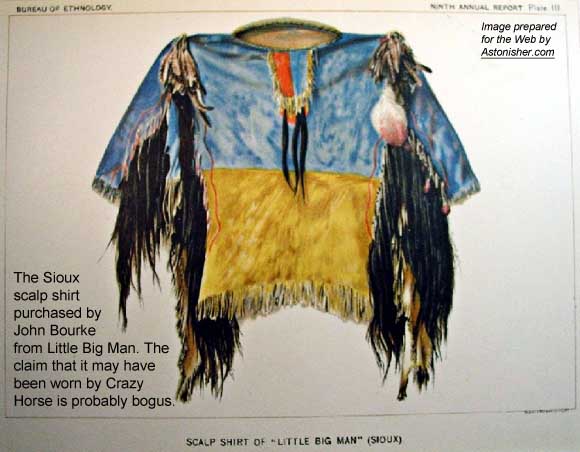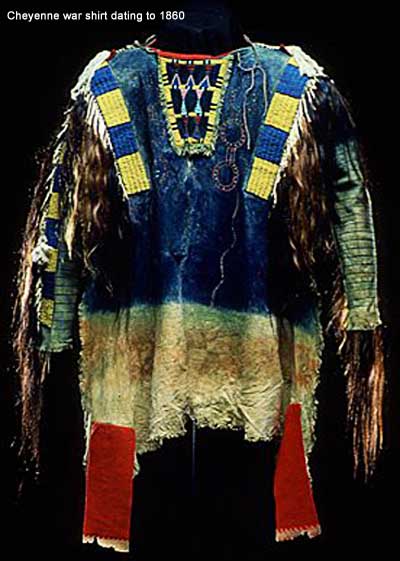|
||||||||
Bruce Brown's 100 Voices...
Sioux warrior's buckskin shirt adorned with beads, quills, paint and dozens of scalplocks. From the collection of David T. Vernon, which is now permanently displayed at the Colter Bay Visitor Center in Grand Teton National Park.
According to the Union Station catalog notes: This painted and beaded war shirt belonged to Cheyenne chief Stone Calf. He began as a warrior but later he became one of the "peace chiefs," the civil (as opposed to military) leaders who opposed unnecessary violence. He was the only Cheyenne chief to attend a meeting of various tribes' leaders in 1870, at what was to become the Darlington Agency near Fort Reno, Okla. Stone Calf and his wife visited Washington D. C. in both 1871 and 1873, sitting for formal photographic portraits that survive today as part of the Smithsonian collections. George Bent wrote of the importance of war shirts to the Cheyenne warriors: "The shield and war shirts had sacred qualities. Many men had shields but only a few of the bravest were allowed to make war shirts. A man who owned a war shirt might lend it to a friend, but the man borrowing the shirt had to show uncommon bravery while wearing it. If he did not he was 'talked about' and shamed. With these war shirts went a number of rules which the wearer was compelled to obey." Bent noted that these rules were so difficult to follow that few war shirts were made. (A Life of George Bent, p. 207) The scalp shirt above, now in the collection of the the American Bureau of Ethnography (which was purchased by from Little Big Man by John Bourke), is purported to have been worn by Crazy Horse. Although it may possibly have been part of his Shirt-Wearer pariphenalia, this scalp shirt was likely never worn in battle Crazy Horse, since all accounts agree that he always fought unadorned, e.g. Lazy White Bull's description of Crazy Horse at the Little Bighorn. The scalp shirt below is purportedly Cheyenne.
The Spirit of Native America: Beauty & Mysticism in American Art by Anna Lee Walters, Chronicle Books, San Francisco 1989, p 78
|
||||||||





 The shirt at right belonged to the Cheyenne "Peace Chief," Stone Calf.
The shirt at right belonged to the Cheyenne "Peace Chief," Stone Calf.









